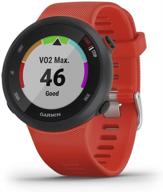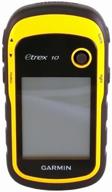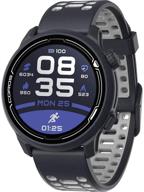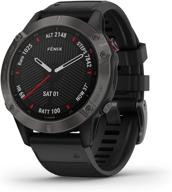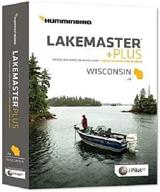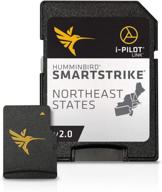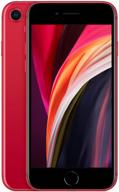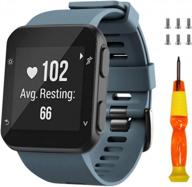How to Choose the Right Handheld GPS for Your Sport
A handheld GPS can be an invaluable tool for many outdoor sports. With a good GPS, you can track your route, speed, distance traveled and more. But not all handheld GPS devices are created equal. The right one for you depends on the specific demands of your sport.
Top products in 🌍 Sports & Handheld GPS
Key Factors to Consider
Here are some key factors to keep in mind when selecting a handheld GPS for your sport:
- Durability - If your sport involves rough conditions, you'll want a durable, waterproof GPS.
- Battery life - Make sure battery life is long enough for your activity.
- Screen visibility - The screen needs to be visible in sun and low light.
- Map detail - More complex maps are useful for hiking and geocaching.
- GPS precision - Important for sports like geocaching.
- Size and weight - Look for a compact, lightweight unit for sports like running.
Top Sports GPS Models
Here are some top GPS models to consider for popular sports:
| Sport | Recommended GPS Models |
|---|---|
| Hiking | Garmin Oregon, Garmin Montana, Garmin eTrex 32x |
| Running | Garmin Forerunner, Polar Vantage V2, Coros Pace 2 |
| Cycling | Garmin Edge, Wahoo ELEMNT Roam, Lezyne Mini GPS |
| Geocaching | Garmin Oregon, Garmin eTrex, Magellan eXplorist 310 |
Key Features to Look For
No matter your sport, keep an eye out for these useful features when choosing a handheld GPS:
- Heart rate monitoring
- Cadence tracking
- Preloaded trails and routes
- Topographic mapping
- Altimeter
- Compass
- Barometer
- Wireless connectivity
Choosing the right handheld GPS takes some research to find the perfect fit. Focus on durability, battery life, visibility, precision and weight for your needs. And look for key features that will enhance your experience. With the right GPS, you can take your performance to the next level.
Top Handheld GPS Features for Athletes
For athletes looking to track their workouts and improve their performance, a handheld GPS unit provides many useful features. Here are some of the top capabilities to look for in a sports GPS device.
Accurate Distance Tracking
One of the most basic yet critical features of a sports GPS is its ability to accurately track distance covered. This allows you to measure your runs, rides, and workouts. GPS chips have improved in precision in recent models. For example, the Garmin Forerunner 955 can pinpoint your location to within 1 meter.
Pace and Speed Monitoring
In addition to distance, GPS devices track your pace and speed in real time. You can see your current pace, average pace, max speed, and other helpful metrics. This data allows you to monitor your effort level and progress over time. Some units even offer virtual pacing partners to help you maintain desired speeds.
Altitude Tracking
Measuring altitude changes is useful for hikers, climbers, cyclists, and other outdoor athletes. The altimeter in devices like the Coros Vertix 2 provides total ascent/descent along with elevation plots. This helps quantify your workload on hilly terrain.
Heart Rate Monitoring
Many modern GPS watches contain wrist-based heart rate sensors to monitor your pulse in real time. This provides vital data on your body's effort and recovery during exercise. Some units like the Polar Vantage V2 even support external chest straps for maximum accuracy.
Preloaded Maps
Preloaded full-color TOPO maps give you your real-time location on the landscape while running, cycling, or hiking in unfamiliar areas. This also aids navigation on trails. Devices like the Garmin Fenix 6 Pro offer thousands of preloaded global activity maps.
Multisport Modes
For triathletes and other multisport athletes, models like the Garmin Forerunner 955 include specific modes for activities like swimming, running, biking, and hiking. This automatically tracks specialized data for each sport.
Another interesting products
Underwater Heart Rate
Some GPS watches like the Polar Vantage V2 contain underwater wrist heart rate, allowing swimmers to monitor pulse while training. This provides insights into effort and recovery during pool sessions.
Running Dynamics
Toprunning GPS units measure metrics like cadence, stride length, ground contact time, and vertical oscillation. This detailed running data helps improve technique and efficiency.
By taking advantage of these key training features, athletes can accurately quantify their workouts, analyze their weaknesses, tailor their training, improve performance, and smash personal records.
Handheld vs Watch GPS - Which is Better for Outdoor Sports?
When choosing a GPS device for outdoor sports like running, cycling, and hiking, two popular options are handheld units and GPS sport watches. But which type is better suited for your needs? Here is a comparison of the pros and cons of each.
Similar products
Display Size
Handhelds have much larger displays, typically 2-4 inches, versus 1-1.5 inches for watches. The bigger screen makes maps and data easier to view at a glance. However, watches are less bulky on your wrist.
Weight and Portability
Watches weigh 1-3 ounces compared to 5-12 ounces for handhelds. This difference is noticeable when running or moving fast. However, handheld units can be clipped to a pack or belt when not needed in your hand.
Battery Life
Watch batteries typically last 10-50 hours depending on features used. Handheld batteries offer 20-35 hours. However, GPS watches have improved battery life dramatically in recent models.
Waterproofing
Most sport watches have 5ATM to 10ATM waterproofing, allowing swimming and weather resistance. Handhelds offer similar IPX7 waterproofing when sealed properly. Neither is suitable for deep water submersion.
Mapping Capabilities
Handhelds traditionally have more advanced mapping features for navigation and terrain analysis. But newer watch models like the Garmin Fenix 7 now offer full topographical mapping as well.
GPS Accuracy
The latest watches and handhelds have comparable GPS accuracy, within a few meters thanks to multi-band sensors. High end models like the Garmin Montana 700 or Fenix 7 provide the most precision currently.
Training Features
GPS watches excel at tracking running dynamics, fitness metrics like VO2 max, recovery, training load, and more. Handheld units focus more on navigation versus athletic training.
Connectivity and Apps
GPS watches allow connectivity to smartphones for notifications, music control, and apps like Strava. Handheld connectivity is more limited.
Price
Basic GPS watch models start around $200, while handheld units begin around $300. High end watches go up to $1000 or more, versus $600+ for premium handhelds.
For serious athletes who want robust fitness tracking capabilities, running watches make the most sense. But for hikers and other outdoor explorers prioritizing navigation, handheld GPS units are ideal.
Maximize Your Training with Handheld GPS Features
Handheld GPS devices provide athletes and outdoor enthusiasts with a wealth of data to optimize workouts and boost performance. By taking advantage of key GPS features, you can get more from your training.
Track Distance
One of the most useful abilities of a handheld GPS is tracking your distance in real time on runs, rides, hikes, and other activities. This allows you to log your total mileage as well as distance per lap. You can also set up custom intervals based on distance.
Monitor Pace and Speed
In addition to distance, your handheld GPS provides instant feedback on current, average and max pace/speed. This helps you maintain desired paces for interval training. You can also track progression by comparing speeds over past activities.
View Elevation Changes
The altimeter in most handheld GPS devices measures elevation gain and loss. This quantifies how much uphill and downhill terrain you cover, a key indicator of workout difficulty and fitness improvements.
Load Workouts
Many top GPS models allow you to load structured workouts and intervals. For example, you can program a track session with specific distances, paces and rest periods. The GPS guides you through the workout.
Analyze Data
After your activity, you can analyze your route, splits, heart rate, calories and other data. This helps identify strengths and weaknesses. Many GPS units integrate with apps to visualize your data.
Use Multiple Sport Modes
Choose from sport-specific modes for running, cycling, swimming and more. The device automatically tracks metrics tailored for each discipline.
Monitor Heart Rate
Built-in optical wrist heart rate sensors or external chest straps provide real-time heart rate data. This quantifies effort and intensity to optimize your training.
Map Your Location
Full-color topo maps confirm your location out on trails. Mapping also aids navigation for new routes. Certain GPS models even allow pre-planning routes.
Share Wirelessly
Bluetooth and WiFi connectivity on GPS devices allows seamless transfer of your data to smartphone apps. This makes your workout data easy to analyze and share.
Take the time to learn the various features and settings of your GPS device. This allows you to structure your workouts strategically, execute training more effectively, analyze your data accurately, safely explore new terrain, and boost your fitness.
Using Handheld GPS to Improve Your Performance
Handheld GPS devices provide athletes and outdoor enthusiasts with a wealth of data to enhance performance. By leveraging GPS to quantify your workouts and progress, you can see meaningful improvements.
Track Mileage
Logging total weekly and monthly mileage with a GPS watch or handheld unit allows you to monitor your training volume. This is key for improving endurance and aerobic fitness. You can structure training cycles to gradually increase mileage for progression.
Monitor Intensity
A GPS tracks your pace and heart rate zones during activities. You can tailor intensity to target different systems - longer intervals at lactate threshold pace for VO2 max, sprint intervals for speed, etc. This stresses your body effectively.
Quantify Elevation
The altitude data from a GPS device quantifies how much ascending and descending you do. You can structure hill workouts to improve strength and economy. Seeing total elevation gain also validates your effort.
Analyze Data Trends
Examining your pace, heart rate and other metrics over time shows positive or negative trends. You can compare data from month to month and adjust training as needed to spur continued gains.
Improve Technique
Running dynamics like cadence, stride length, ground contact time can highlight areas to refine technique. Cueing improvements results in better running economy.
Monitor Fatigue and Recovery
Your pace and heart rate data helps quantify fatigue after hard efforts. You can adjust training accordingly and periodize proper recovery to avoid overtraining.
Find New Routes
Exploring new terrain with GPS mapping keeps your workouts fresh and engages new muscle groups. Variety is key for adaptation and progress.
Verify Accuracy of Training
GPS provides confirmation that your training aligns with planned sessions for distance, pace, elevation gain and other metrics. This prevents undertraining.
View Workout History
Looking back through your GPS data gives you a detailed log of your training. This progression motivates you to keep striving for improvements.
By fully utilizing your GPS device's features and data to structure your training, monitor your progress, refine technique, and promote recovery, you can continually enhance your fitness and performance to reach new heights.
Handheld GPS Buying Guide - What to Look For
With so many models on the market, selecting the right handheld GPS device for your needs takes some research. Here are the key factors to consider when buying a handheld GPS unit:
Accuracy
GPS accuracy determines how precisely your location is pinpointed. Look for newer models with multi-band GLONASS or Galileo satellite tracking for accuracy within 3-10 feet.
Screen Size and Resolution
Larger screen sizes of 3-4 inches are easier to view maps and data on. High resolution screens (240 x 400 pixels or more) provide the sharpest images.
Battery Life
Battery life varies from 15-40 hours depending on model. Go for the longest battery possible within your budget. Some units have replaceable AA batteries.
Waterproof Rating
Check the IPX waterproof rating, typically IPX7 for most handheld units. This allows immersion in 1 meter of water for 30 minutes.
Memory and Storage
More internal memory (64MB or higher) allows you to load more maps and data. Plus look for a microSD card slot to add external storage.
Preloaded Maps
Preloaded base maps like Topo, public lands, and marine charts are useful. Some models include subscription-based access to more detailed maps.
Connectivity
Bluetooth and wireless connectivity allows transfer of data to your mobile apps and computer. This provides deeper analysis of GPS data.
Key Features
Look for ABC sensors (altimeter, barometer, compass), camera, flashlight, hunting/fishing info, long battery life, and extra durability.
Price Range
Entry-level handheld units start around $100, mid-range is $200-$400, and high-end models run $450+. Determine how much your budget allows.
Choosing the right handheld GPS requires balancing your needs for features, accuracy, durability, and budget. Carefully assessing these factors will ensure you select the perfect device.
Garmin Etrex 30 Manual
The Garmin eTrex 30 is a GPS device that can be used for outdoor activities such as hiking, cycling, and geocaching. Here is a breakdown of the manual for the Garmin eTrex 30:
Overall, the manual provides detailed instructions on how to use the Garmin eTrex 30 for a variety of outdoor activities, as well as how to troubleshoot and maintain the device.
How To Set Up Waypoints On Garmin Etrex 30??
To set up waypoints on the Garmin eTrex 30, you can follow these steps:
- Mark a Waypoint: To save your current location as a waypoint, select "Mark Waypoint" from the main menu. If necessary, select a field to make changes to the waypoint, and then select "Done".
- Project a Waypoint: To create a new waypoint by projecting from an existing waypoint, select "Waypoint Manager" from the main menu, then select the waypoint you want to project from. Next, select "Project Waypoint," enter the bearing, and select "Done." Then enter the distance, and select "Done".
- Label and Add Icons: To label and add icons to your waypoints, select "Waypoint Manager" from the main menu, then select the waypoint you want to edit. Select "Edit," then select the name field to enter a label. To add an icon, select the icon field, and choose an icon from the list.
- View Waypoints: To view your saved waypoints, select "Waypoint Manager" from the main menu. You can sort your waypoints by name, distance, or symbol.
- Additional Help: For more detailed instructions on creating and managing waypoints on the Garmin eTrex 30, you can watch tutorial videos on YouTube, such as "eTrex Waypoints Help", or refer to the device manual.





